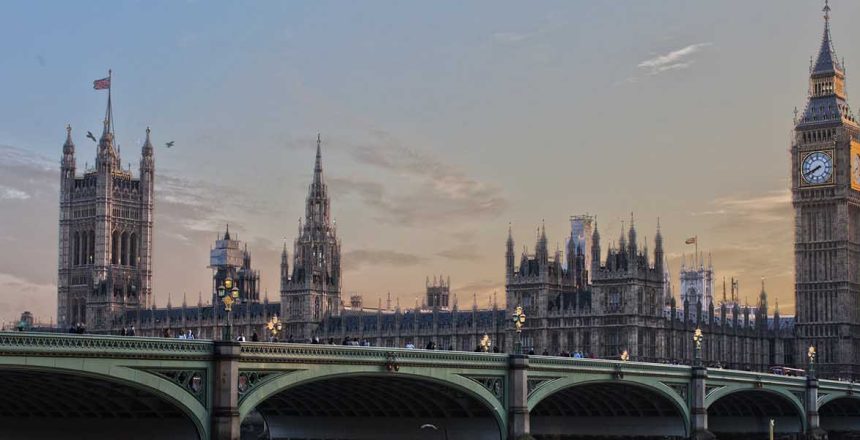So, what’s going on with Brexit?
In class a lot of our #Teachify students are asking about Brexit so we thought we would make this summary to keep you in the loop.

By Jack Perez-Haydock
After nearly three years of almost constant infighting, snap elections and even the resignation of a Prime Minister, the UK’s departure date from the EU is almost upon us. It’s hard to believe that the UK invoked Article 50, officially beginning the process of leaving the EU, nearly two years ago.
Officially the UK is set to leave the EU on 29 March, two years to the day after Article 50 was invoked. But unfortunately, it isn’t exactly that simple.
«At the time of writing, the UK still has not managed to successfully negotiate a deal for their exit from the EU, meaning that as things stand the UK will leave without a deal in just under two weeks. So what does this mean for the UK?»
It’s not exactly clear. However, many believe that crashing out would be disastrous as the UK would go from being part of the largest trade organization in the world to being on their own without any grace period. According to some experts this could mean anything from food shortages to kickstarting another recession!
Others believe that a no deal Brexit is the right thing to do and is the ‘will of the people.’ They believe the UK’s current world standing is high enough to put it in an advantageous position when it comes to negotiating better trade deals outside the EU.
Either way, regardless of the overall outcome of Brexit, both sides can agree on one thing: the process has been an absolute mess. The UK government has spent the past two years unsuccessfully trying to negotiate a deal with the EU and between its own factions. It seems that the country has never been so divided as on this issue.


So how did we get to his point?
After the result of the 2016 referendum, the country was in shock. Although there had obviously been growing resentment towards the EU over the years, very few people could have predicted that the UK would actually vote to leave the EU.
The morning after the referendum results, Prime Minister and Leader of the Conservative Party David Cameron announced his resignation. Cameron had been a strong Remain supporter throughout the referendum and it seems he was unprepared for the fact that the Leave campaign would win. Cameron’s resignation meant that there would now a contest to decide who would be the most capable person to lead the UK through the Brexit negotiations.
Spread the word
Theresa May, another Remainer, ultimately won the support of Parliament. She would become the second ever female Prime Minister after Margaret Thatcher. May had been a popular choice to replace Cameron throughout the leadership contest. She promised to bring strong leadership and unity to the country throughout the Brexit process.
With the referendum result decided and a new Prime Minister it seemed that the UK was ready to begin setting out its strategy for leaving the EU. Unfortunately, there were now huge divisions within the UK public, not only between Remainers and Leavers but also between those who wanted a ‘Hard Brexit’ and those who want a ‘Soft Brexit.’
Hard Brexiteers preferred a clean break from the EU without a deal whereas Soft Brexiteers wanted to keep some of the advantages of staying in the EU, for example staying in the Customs Union and retaining freedom of movement in Europe.
What was going to happen next?
Others argued that the referendum result was not legally binding and the UK should not even entertain the idea of leaving the EU because it would be too complicated.
Regardless, in March 2017 Theresa May invoked Article 50, officially beginning Brexit negotiations with Europe. According to EU law the UK would now have exactly two years to negotiate their break from the Union. Many criticized Theresa May for deciding to invoke Article 50 before the UK had a clear view on whether they would be pursuing a hard or soft Brexit. But it was too late, the clock was now ticking.
In April 2017, Theresa May announced that the UK would hold a snap election in June, despite previously promising that there would be no early elections during the Brexit process. Due to the unpopularity of the other political parties in the UK at the time, May thought it was a good moment for the Conservatives to retain their majority and gain a clear mandate for Brexit.
Contrary to expectations, the elections saw a surge in popularity for the Labour Party, the Conservative Party’s main opposition. Although the Labour Party were unable to win the election, the Conservative Party lost so many votes that they no longer held a parliamentary majority.
What is the DUP?
Under UK parliamentary law, they were forced to form a coalition government.
After several days of negotiating it was announced that the Conservatives would be forming a government with the Democratic Unionist Party (DUP), a staunchly right wing Northern Irish Unionist party.
For many, the snap election was a massive misstep by the Conservatives as they had lost their parliamentary majority.
This meant that their vision for Brexit was now compromised as they would be forced to keep the DUP happy during negotiations.
After months of infighting, the UK began official withdrawal agreements with the EU in June 2017.
Key issues included the Irish border and the status of EU nationals living in the UK along with UK nationals living in the EU.
Things were further complicated in December 2017, when a group of rebel Tories (another word for Conservatives) sided with the opposition in order to force the government to take a final parliamentary vote on the Brexit deal once it had been negotiated with Brussels.
With that decided, negotiations continued into 2018. The longer negotiations went on without a clear Brexit strategy in sight the more opposition began to grow ̶ all the more so when it was announced that Article 50 could be revoked, effectively cancelling Brexit. High profile resignations followed, such as Foreign Secretary Boris Johnson (a staunch Brexiteer), who stepped down in July stating his reason to be frustration with the lack of progress in Brexit negotiations.



What will happen on March 29th?
As 2018 drew to a close with no deal agreed, it seemed that the UK was heading for a crisis. January 2019 saw Theresa May’s deal being thrown out by Parliament with 432 No votes and 202 Yes votes, making it the biggest defeat in British parliamentary history.
The vote was put to Parliament once again earlier this month, but it was once again rejected by Parliament 242-391. Meanwhile, a non-binding amendment proposed by Caroline Spelman was passed, rejecting the possibility of a No Deal Brexit under any circumstances.
On 14 March, Parliament also voted to ask the EU to grant an extension to Article 50, allowing another three months for further negotiations. It is still unclear whether the EU will grant an extension without the promise of a second referendum to the clarify the ‘will of the people’ regarding Brexit.
An amendment calling for an extension to Article 50 to allow for a second referendum was rejected by Parliament, thus dashing the hopes of many Remainers that perhaps maybe Brexit could be cancelled.
Which brings us to the present day. Expect things to escalate even further during the last remaining weeks before Brexit day. Here are the likely possible outcomes:
The EU denies the UK the right to extend Article 50. The UK crashes out of the EU without a deal on 29 March. Although the Caroline Spelman amendment states that the UK has no desire to leave the EU without a deal at any time, it is after all not a legally binding agreement and so UK could still leave without a deal.
The EU grants the UK a three month extension to Article 50. Although many EU leaders are not keen on this idea as the UK has already had two years to negotiate its exit, the EU is still very likely to grant the UK an extension. This would allow Theresa May more time to push her deal through Parliament, but whether she will succeed this time is anybody’s guess.
The EU grants a longer extension on the condition that the UK holds a second public referendum on EU membership. Although Parliament has already voted against this, like the Caroline Spelman amendment on EU membership, it was not a legally binding vote. For many, this would be the fairest outcome as the public would have a say on the actual outcome of Brexit. For many Remainers this would also be a good opportunity to overturn Brexit and cancel Article 50 once and for all.
Article 50 is cancelled and Brexit is called off. This is perhaps the least likely of all of the options, though it is still a possibility. With Parliament stating that it has no desire for a no deal Brexit or a second referendum, if Theresa May fails to push her deal through before Brexit day there are definite grounds for Article 50 to be withdrawn and Brexit to be cancelled. This would probably create more divisions within the UK public for many years to come as many Brexiteers would feel betrayed by their government.
What will happen to Spanish nationals?
It is not completely clear how this will affect Spain, but it is unlikely that Spain will be greatly affected by the UK’s exit from the EU.
Spanish nationals in the UK may not have the same rights as before to live in the UK unless they successfully apply for settled status.
The Spanish, in turn, have promised to do everything they can to protect the existing rights of Brits resident in Spain, provided they are officially registered and living there legally when Brexit happens.
Spain may also see a drop in UK tourism, which would affect Spanish cities like Benidorm where tourism from the UK greatly contributes to the local economy.
Spain may also see a drop in the number of UK nationals living in their country.
At present, Spain is home to more UK nationals than anywhere else in Europe. Some Spaniards might think it would not be such bad thing if some of them went home!














